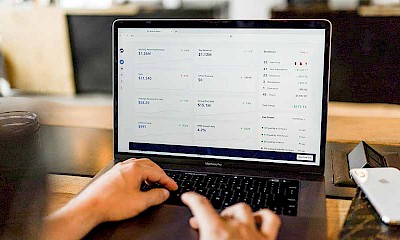Retargeting
Retargeting (also known as remarketing) is a form of online marketing in which users who have already visited a website or viewed a product are approached again with targeted advertising. The aim is to bring them back and achieve a conversion - such as a purchase, enquiry or registration.
The principle: anyone who cancels a shopping basket, for example, will later receive adverts for precisely these products. In this way, interested parties are led back to complete the purchase. As users who have already visited a website are more likely to make a purchase, retargeting is considered particularly efficient - not only for conversion campaigns, but also for branding.
The most important facts about retargeting in a nutshell:
Form of online marketing, also known as remarketing
Re-targets users who have already shown interest
Technically controlled via cookies or pixels
Advantages: higher conversion rates, less wastage, stronger brand loyalty
Disadvantages: Data protection concerns, opt-in obligation, restrictions due to ad blockers
Use: Retrieve shopping basket abandoners, address people interested in products, strengthen branding
Why is retargeting useful?
Retargeting specifically addresses people who have already shown interest, thereby significantly increasing the likelihood of a conversion. Further advantages:
Increased efficiency by focussing on relevant target groups
Cost reduction, as wastage is minimised
Brand strengthening, as repeated visual contacts build trust
How does retargeting work technically?
Retargeting relies on tracking technologies:
A pixel or cookie records which pages or products visitors have viewed.
Suitable adverts are displayed via an ad server as soon as the person uses another website or app.
Dynamic retargeting enables personalised ads that show exactly the products that were previously viewed.
Frequency capping ensures that adverts are not shown too often.
In which scenarios is retargeting used?
Users who have placed a product in the shopping basket but have not completed the purchase will see matching adverts.
Anyone looking at specific product categories will later receive targeted recommendations.
Downloading a white paper or visiting a landing page can also be a retargeting trigger.
What are the advantages and disadvantages of retargeting?
Advantages:
Higher click and conversion rates
Cost savings through targeted targeting
Strengthening of brand awareness and customer loyalty
Disadvantages and criticism:
Data protection concerns: Many users perceive retargeting adverts as "tracking".
Legal requirements: In the EU, opt-ins are required under the GDPR and ePrivacy Directive.
Technical restrictions: Adblockers or browsers severely restrict retargeting.
Which platforms offer retargeting?
Retargeting is supported by many large advertising platforms and has long been an integral part of modern online marketing strategies. Google Ads and Meta (Facebook & Instagram) are particularly relevant here, as they offer companies a wide range of options for reaching target groups precisely.
Google Ads provides various functions for retargeting:
Remarketing Lists for Search Ads (RLSA) can be used to display adverts specifically to users who have already interacted with a website. This allows search ads to be targeted even more precisely.
With dynamic display ads, users can be addressed on websites in the Google Display Network - with personalised banners that show exactly the products or services that they have previously viewed.
There are also special remarketing options for YouTube and Google Shopping so that video or product adverts can be played again.
Meta also offers extensive retargeting options:
The Facebook pixel is the central tracking tool that records the behaviour of visitors on a website and makes this data usable for retargeting.
With Custom Audiences, companies can define exactly which target groups should be addressed again - for example shopping basket abandoners, visitors to certain pages or users who have watched a video.
Lookalike audiences can also be used to reach new but similar target groups that closely resemble the behaviour of the original visitors.
In addition to Google and Meta, there are other platforms that enable retargeting. These include LinkedIn, where retargeting campaigns are used primarily in the B2B sector, as well as specialised programmatic advertising networks that automatically play out ads via various publishers. Email marketing systems can also be used as a remarketing variant if users are targeted again by email after a campaign.
What conclusions can be drawn about retargeting?
Retargeting has become one of the most effective strategies in digital marketing. The core lies in retargeting users who are already interested and accompanying them along the customer journey. Compared to traditional display advertising, wastage is significantly lower because the campaigns focus on a target group that has already had contact with the brand or products.
Companies benefit from greater efficiency: conversions can be increased, advertising budgets are used in a more targeted manner and brand loyalty is strengthened in the long term. Especially in highly competitive markets, retargeting can offer a decisive advantage in order to avoid losing potential customers to competitors.
Sources:
https://de.wikipedia.org/wiki/Retargeting
https://www.haufe-akademie.de/blog/glossar/retargeting/
https://www.criteo.com/digital-advertising-glossary/retargeting/







